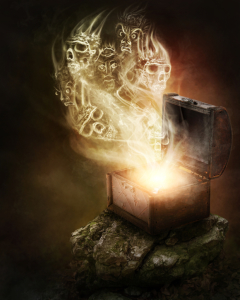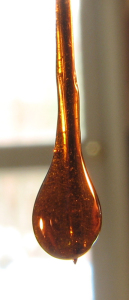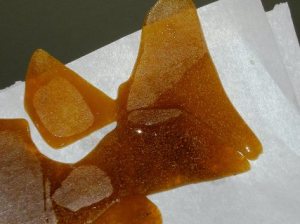Pandora’s Box is Now Open

A drinkable form of marijuana called Legal is now available at eight of Washington State’s recreational marijuana stores. The drink comes in five different flavors and is infused with 22 milligrams of THC: “enough to know you’re high, but not so much as to overwhelm.” Each flavor is supposed to give you a slightly different high. The Company’s founder, Adam Stites said that “drinakables” don’t carry as much of a taboo as other forms of marijuana, “It’s more approachable” to ask your parents if they want a Legal instead of a joint. Stites sees “green” beverages as an amazing, untapped new market:
It’s an opportunity to make an amazing, unique, unusual, and delicious product while also making history. . . . I think my grand-kids will be amazed to know that people used to go to jail for having a plant.
At the same time that Denver and Seattle city officials are denying that legal marijuana is bringing in pot tourists (here and here), travel websites have reported an increase in searches for both destinations. Taylor Cole, who handles public relations for Hotels.com said: “We’ve seen that searches for both destinations have spiked dramatically.”
Year-after-year, there has been a 73 percent increase in traffic at Hotels.com for Denver rooms during its 4/20 festivities. And there was a 68 percent increase among travelers looking for Seattle rooms during July, the first month of legal marijuana sales in that state.
My 420 Tours of Denver Colorado offers a variety of pot-based tour packages. You can take a cannabis cooking class; a Dispensary & Grow Tour, a Sampler Vacation package. You can book a 420 friendly luxury hotel room in the heart of downtown Denver. “Enjoy vaping in your room or smoking freely on 420 smoking deck overlooking downtown Denver.”
You can take a six-hour ride on the My 420 Tours Cannabus, stopping at some of Denver’s top retail marijuana stores. A tour of a professional grow facility, a cannabis friendly lunch, and a 4:20 pm smoke out are all included. There is also free sampling of cannabis edibles on the bus throughout the tour. In a 2½ hour cooking class you will learn “how to make and use various cannabis oils and a variety of organic cannabis-infused treats.” Oh, and you get free samples during class and to take home.
Along with the new edible products and tourism destinations, marijuana legalization is having some potentially harmful and far-reaching consequences. On March 10th, a college student from Wyoming bought four marijuana cookies for herself and her three friends and returned to their Denver hotel. A few hours later, her 19-year old friend leapt over the fourth-floor railing into the lobby.
The woman who bought the cookies said she believed it was the first time her friend had ingested marijuana. They began eating their cookies around midnight. Levy Thamba said he wasn’t feeling anything, so he ate the rest of his cookie. Later that night Levy was “screaming, speaking in French, apologizing for criminal behavior that he had not committed, smashing fixtures and finally jumping off the balcony.” They had been advised to split the cookie into six pieces and eat one piece at a time.
In May of 2014, the governor of Colorado signed legislation to tighten controls on edible and concentrated forms of marijuana. The first law created a task force to devise packaging for cannabis-infused edibles to make those products readily distinguishable from regular foods. Why? Because Colorado Children’s Hospital reported they had treated 13 children, six who became critically ill from edible marijuana.
The hospital’s medical director of the emergency room reported that a number of children had been admitted for “for sedation or agitation and one child suffered breathing problems that required a respirator.” A Colorado study reported in JAMA Pediatrics found there has been an increase of unintentional ingestion of marijuana by children since the modification of drug enforcement laws for marijuana possession in 2009. State Senator Mike Johnston said: “By improving labeling and giving kids a way to tell the difference between a snack and a harmful substance, we can keep kids … out of the emergency room.”
The second law regulates the amount of concentrated marijuana that can be sold to an individual. Marijuana edible companies were encouraged to make products containing no more than 10 mg of THC. If they do, these products will be tested less often for potency than other edibles.
Another incident of suspected marijuana intoxication involved a Denver man shooting his wife to death as she was on the phone with an emergency dispatcher. She told the dispatcher her husband had use pot and was hallucinating and frightening her and their three children.
Under emergency rules that were adopted on August 1, if a marijuana edible is more than 10 mg and up to 100 mg, “you have to score it or demark it in such a way that it is intuitively obvious to the consumer how to break off a serving size of that edible.”
Like opening Pandora’s box, the increased availability of marijuana as a medicinal and recreational drug is having some unanticipated detrimental consequences. Children are being poisoned and people are dying after unintentional ingestions and overdoses of THC. And we are only at the beginning of the medicalization and legalization movement. Where will we be in five or ten years from now? Hopefully the corrections mentioned here will minimize what we’ve seen so far. But like Pandora, I’m afraid that it is already too late to close the container. The genie is already out of the bottle.


